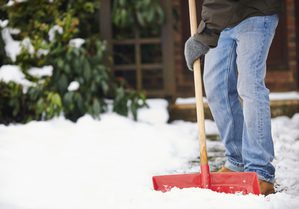When the cold weather approaches, it’s time to start thinking about snow. Snow may look picturesque and peaceful, but it can be dangerous if you are not prepared accordingly. Here are a few snow safety tips to protect you from a cold winter ahead:
- Get your snowblower ready. Be sure to check the oil level before each use. Remove any old gas still left in there from last winter and fill it up with new gas. If you are not familiar with the manual, be sure to brush up accordingly.
- Find your snow shovels. It’s better to locate them now, so you’re not frantically trying to find them at the last minute. If they’re in bad condition, buy new ones before the snow hits – you’d be amazed how quickly they can sell out. And if you anticipate needing a little extra help shoveling, stock up on some little shovels for your kids to pitch in.
- Anticipate what additional winter gear you’ll be using this year. Now is the time to start waxing the sleds and sharpening your ice skates.
- Prepare for car trouble. No one likes the idea of being stuck in the snow – but it’s better to be safe than sorry. Here are a few things that are always good to have on hand in your car:
- A snow brush
- Cat litter (this is particularly helpful for traction)
- A couple of blankets (wool blankets work best)
- A flashlight
- An extra pair of gloves
- A phone charger (you never know how long your battery is going to last)
- Breakfast bars and/or a sleeve of crackers
- Water bottles (make sure they are not full, or they will explode if frozen)
- First aid kit
- A small candle and a lighter, just in case you get stuck in the dark
- If you have kids, you may even want to pack a coloring book and crayons.
- Protect your windshield from ice. Here’s a fun trick we learned: fill a spray bottle halfway with alcohol and the other half with water. A couple of quick sprays later, the ice will melt away. Remember: alcohol does not freeze, so you can keep this bottle in your car.
- Shovel and de-ice your driveway, sidewalk and steps. To prevent back injuries, bend your knees and lift with your legs. Also, there’s a good chance you threw out last year’s bag of salt while cleaning out your garage over the summer. Double-check to ensure you have some on hand so you can protect your driveway, steps and sidewalk accordingly.
- Caulk windows and doors. It’s important to detect major leaks and fix them before extreme cold hits. This will keep your home warm by blocking out drafts – and as a bonus, it will also save you money on your energy bills.
- Trim overgrown branches away from your home. After a particularly fierce snowstorm, the last thing you want is for a tree to crash through your roof or hit a powerline. It’s best to take care of trimming branches while it’s still warm enough to be outside.
- Clean your gutters. It’s best to start removing debris from your gutters towards the end of fall, right after the last leaves have fallen. Clean gutters will allow melting snow to drain properly, so it’s important not to skip this step!
- Check your furnace. You should replace your furnace filter every three months. Filters with trapped lint, dust, pollen, etc., will cause your furnace to work harder and will often take longer to run. Having a clean filter will warm you up faster and will also be more energy-efficient.
- Get your roof inspected. Heavy snow, ice, rain or wind can be tough on your home – particularly your roof. Now is the time to start detecting and repairing any weaknesses in your roof, including missing/damaged shingles. It is also a good idea to check your attic and ceilings for stains and signs of water leakage. The quicker you can fix these, the easier the winter will be.
- Clean your fireplace and chimney. When was the last time you used your fireplace? If there is a lot of debris building up (or if any animals decided to build their nests there), this could be hazardous. Additionally, debris or soot in your chimney can also be dangerous. Hire a professional to clean and ensure that your fireplace will be in good condition this winter. Keep your fireplace flue closed when it is not in use.
- Make sure your vents are not blocked. Move your furniture so it does not block your home’s heating vents.
- Prevent your pipes from freezing. There are a few tricks to protect your pipes. First things first, leave your cabinet doors open – this allows for warmer air circulation around piping, especially in kitchens and bathrooms. In unheated areas of your home, slowly run your faucets (with very small drips of water) to prevent frozen pipes or blockages. Use insulation sleeves to wrap water pipes in your basement and crawl spaces to slow heat transfer.
- Protect your water heater. Consider getting an insulated blanket for your water heater. If time permits, consider insulating walls and attics. While caulk is preferred, you may not have access and time at your disposal.
- Insulate windows and doors. Consider weather-strips for doors and windows to lower heating costs and protect home from costly drafts.
If you’re looking for additional protection this season, set up a consultation with one of Horton’s personal insurance experts. We hope these snow safety tips protect you from the rough winters ahead. Stay warm!
Material posted on this website is for informational purposes only and does not constitute a legal opinion or medical advice. Contact your legal representative or medical professional for information specific to your legal or medical needs.



